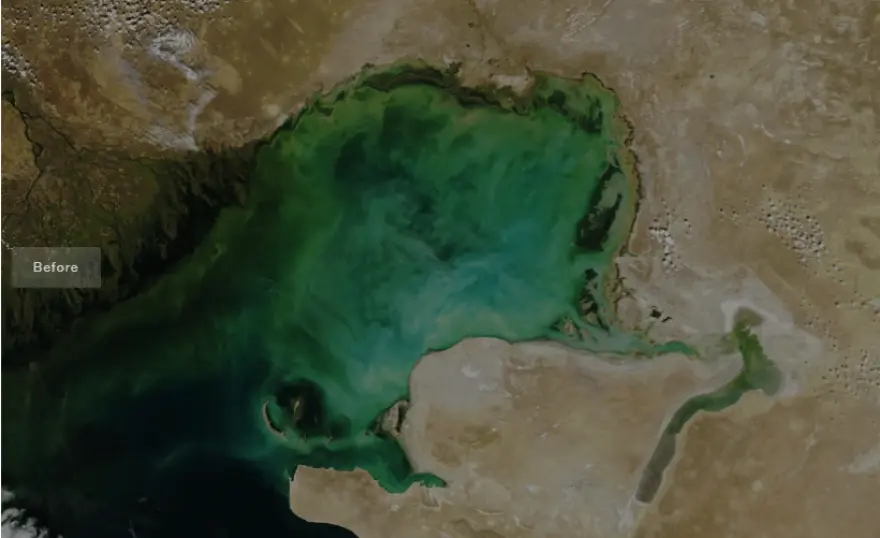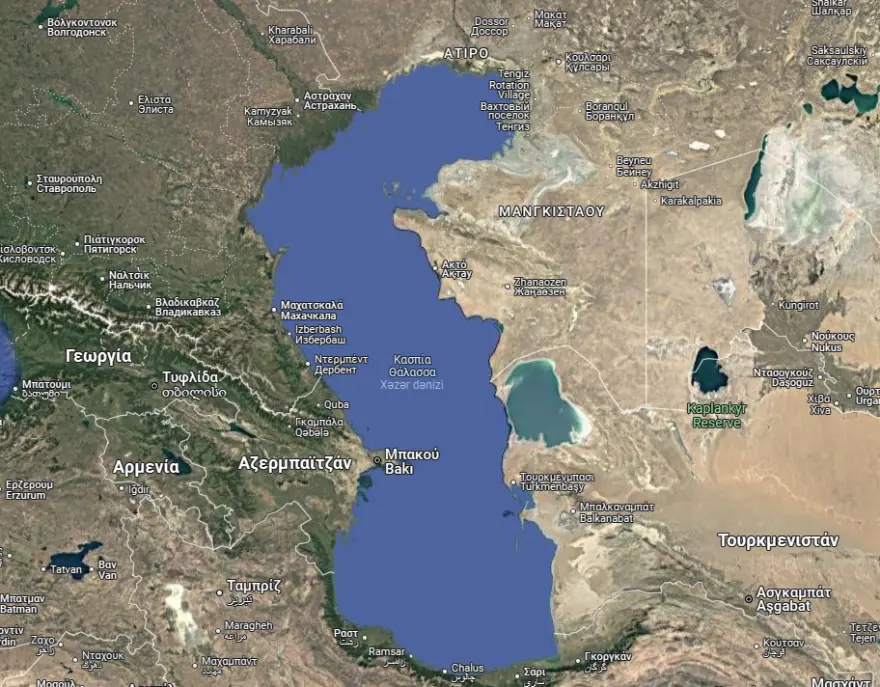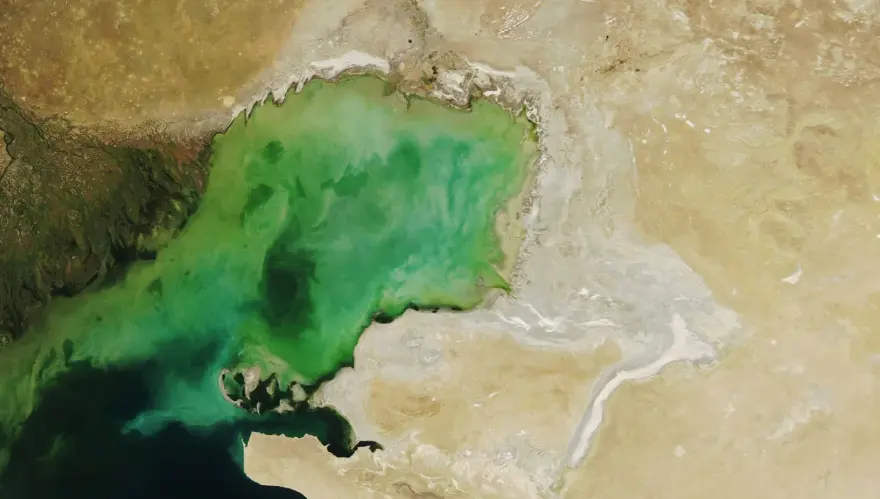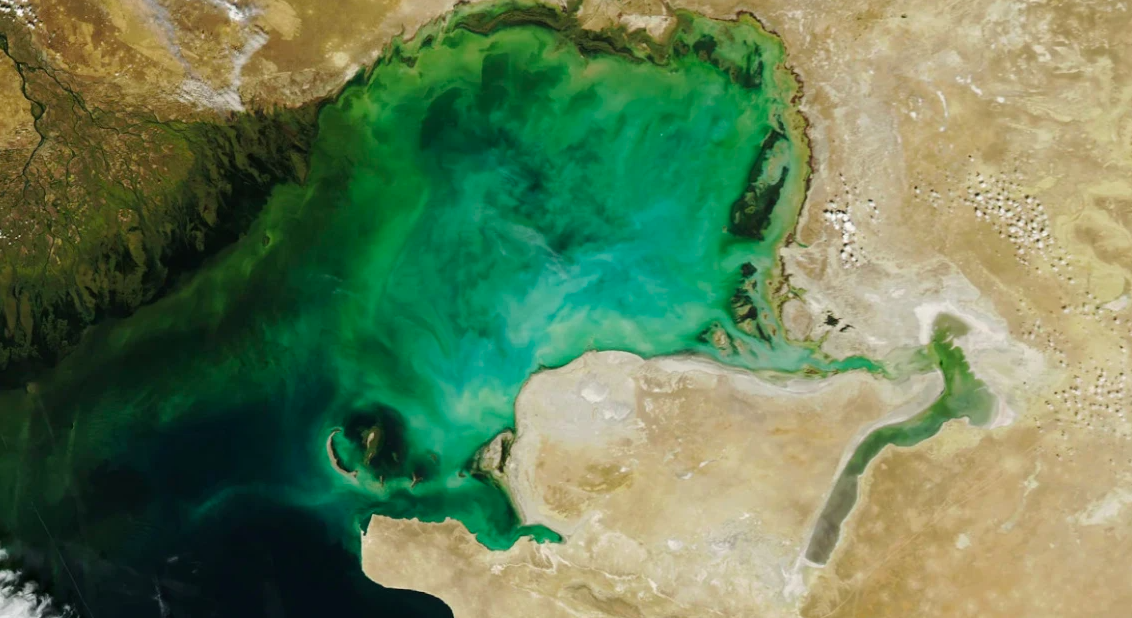The Caspian Sea, the largest enclosed body of water on Earth, is now facing a severe environmental crisis. Climate activists, such as Azamat Sarsenbayev from Aktau, Kazakhstan, and photographer Khassayar Javanmardi from Rasht, Iran, are witnessing the dramatic retreat and transformation of the once-majestic landscape. “It’s incredibly hard to watch,” said Sarsenbayev, observing the Caspian Sea gradually vanish from Kazakhstan’s shores.

The future of the sea looks grim: excessive water extraction, pollution, and worsening climate change are accelerating its declining water levels. Experts like Matthias Prange from the University of Bremen warn that the sea level could drop between 8 and 18 meters by the century’s end, with some research indicating a potential decrease of up to 30 meters.
An aerial photograph of the northern part of the Caspian Sea taken on September 20, 2006, compared with an image from the same location on September 19, 2022, shows the dramatic transformation.

The Caspian Sea, fed by 130 rivers, relies on the Volga River for 80% of its water supply. However, with over 40 dams built in Russia and an expected rise in evaporation due to climate change, the water reaching the Caspian has significantly decreased. “The situation is dire for the entire region,” stated Vali Kaleji, an expert in Central Asian and Caucasian studies.
This environmental disaster has economic and geopolitical consequences. The five nations bordering the Caspian—Kazakhstan, Iran, Azerbaijan, Russia, and Turkmenistan—depend on the sea for fishing, agriculture, tourism, and water supply. The region is also rich in oil and gas reserves. If the sea level continues to drop, these countries may compete for dwindling resources, sparking new tensions.

The sea level drop also threatens the Caspian Sea’s unique biodiversity. Species such as the endangered wild sturgeon, which supplies 90% of the world’s caviar, and the Caspian seal, live exclusively in this sea. “Its isolation for millions of years has fostered unique species,” noted biologist Marc Wesling. At the same time, pollution and overfishing are pushing these rare species toward extinction.
Concerns over the Caspian’s state arise as the region takes the global stage, with the COP29 UN climate conference scheduled next month in Baku, Azerbaijan. Despite calls for protective measures, countries like Azerbaijan plan to expand fossil fuel production, further worsening the climate crisis.
In Kazakhstan, Sarsenbayev continues documenting the sea’s condition, raising public awareness through images that capture both the beauty and the looming destruction facing the Caspian. Similarly, Javanmardi from Iran hopes his photography will highlight the importance of protecting this sea, reminding the world of humanity’s fragile connection with nature.
Ask me anything
Explore related questions





